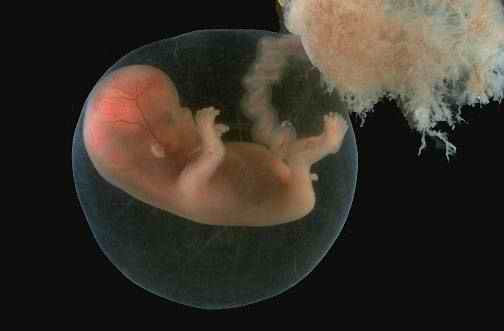The embryonic period lasts from the third to the eighth week of development. During this period, three folia embryonalia- the ectoderm, mesoderm and endoderm - give rise to tissues and organ systems. As a result of the formation of organs, body contours are formed.
Ectoderm folia embryonalia
Ectoderm folia embryonalia gives rise to those organs and structures that maintain contact with the external environment, namely:
- the central nervous system;
- peripheral nervous system;
- sensory epithelium of the ear, nose, eyes;
- skin, including hair and nails;
- pituitary gland;
- mammary glands;
- sweat glands;
- tooth enamel.
Nerve plate development is induced by inactivation of BMP-4 growth factor. In the absence of this activation, the entire ectoderm is converted into the epidermis.
Mesoderm folia embryonalia
Important components of the Mesoderm folia embryonalia are the axial, intermediate mesoderm, as well as the mesoderm of the lateral plate. The paraxial mesoderm forms somitomers, which give rise to the mesenchyme of the head and turn into somites in the occipital and caudal segments. Somites give rise to:
- myotoma (muscle tissue); ;
- sclerotoma (bones and cartilage);
- dermatoma (subcutaneous fat).
All of them are supporting tissues of the body. Signals about the differentiation of somites come from surrounding structures, including the notochords, neural tube and epidermis. The notochord and the basal part of the neural tube produce the Shh factor, which induces the formation of a sclerotome. From the medial part of somite, under the influence of neurotrophin-3, which is produced by the dorsal part of the neural tube, dermis develops. Mesoderm also gives rise to the vascular system, i.e. heart, arteries, veins, lymphatic vessels, all blood and lymph cells. In addition, it gives rise to the genitourinary system (with the exception of the bladder). Derivatives of the mesoderm are also the spleen and cortical substance of the adrenal glands.
Endoderm folia embryonalia
Endoderm folia embryonalia The Endoderm folia embryonalia provides the development of an epithelial lining of the gastrointestinal tract, respiratory tract and bladder. It also forms the parenchyma of the thyroid, parathyroid and pancreas and liver. The epithelial lining of the auditory tube and tympanum is also of endodermal origin.
As a result of the formation of organs and the rapid growth of the central nervous system, the initially flat embryonic disk begins to bend in the cephalocaudal direction, forming the head and tail folds. The disk also bends in the transverse direction (lateral folds), which determines the rounded shape of the body. Communication with the yolk sac and placenta is maintained respectively through the yolk duct and the umbilical cord.
















